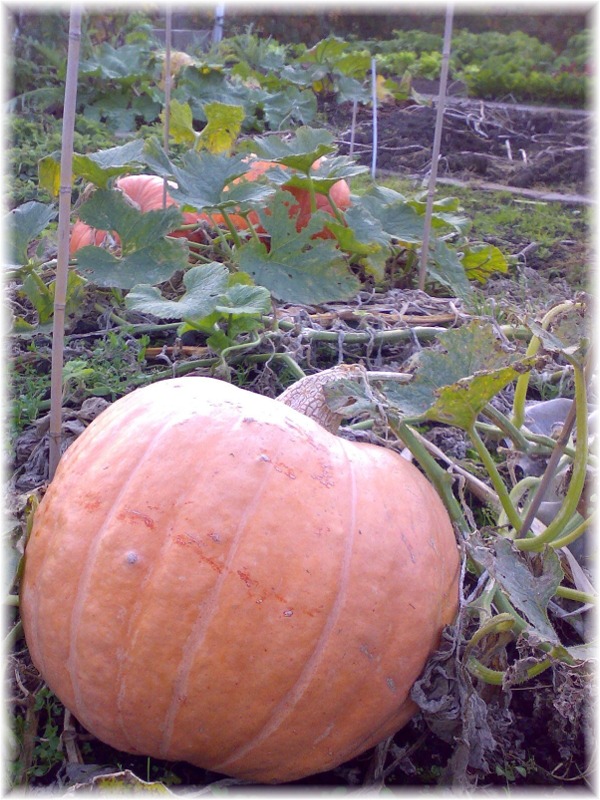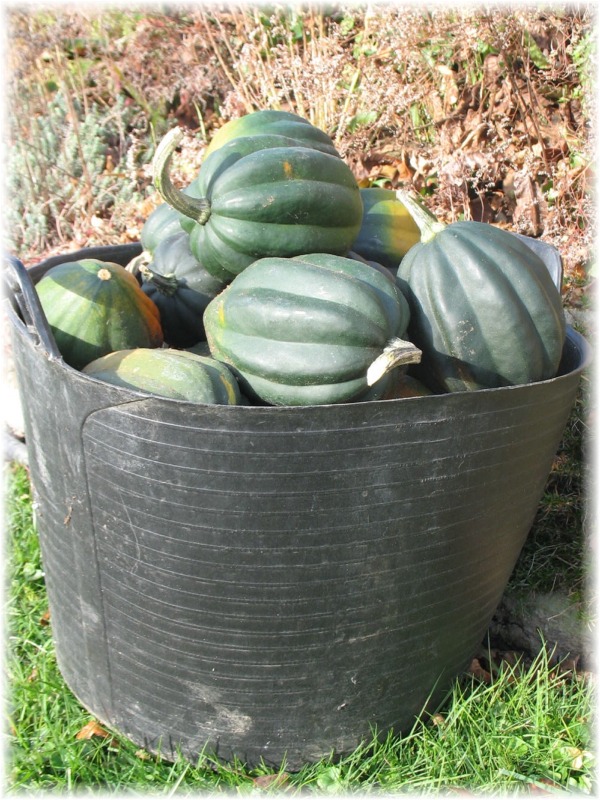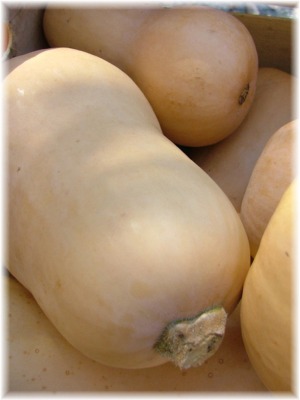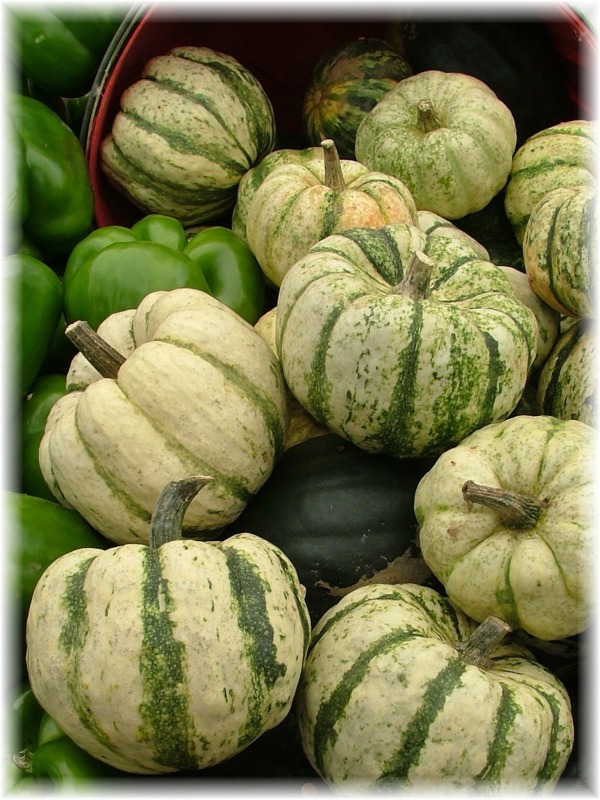
There’s nothing very difficult about growing Vegetables, but growing Pumpkins and Squash couldn’t possibly be easier. Plant a few seeds in spring once the soil has warmed up; stand back for about 90 days, and harvest. It’s treasure worth waiting for. Pumpkins and Winter Squash always feature large in our fall and winter menus. We eagerly await the opportunity to celebrate their sweet and nutty flavor in all sorts of delicious recipes, from pumpkin-filled ravioli and Thai pumpkin curry to Butternut Squash Shrimp Bisque and stuffed acorn squash. Hearty, heartwarming meals that nourish both body and soul.
When stored properly, Pie Pumpkins and Winter Squash will keep beautifully for many months, just as they are, without any need for freezing, canning or other processing. The key is to harvest them at just the right time, to cure them for about a week, and then to store them in a cool, dark place.
Harvesting Pumpkins and Winter Squash

Ideally Pumpkins and Winter Squash should be harvested when they are completely mature and have developed their full color and a hard rind. For Winter Squash, other signs of maturity include dulling of the skin, a yellow spot where the fruit sat on the ground, and a dry, corky stem. If there’s a danger of heavy frost, or if mildew or other fungal diseases have attacked the foliage, harvesting a bit early is better than leaving your prized fruit in the field where it could get damaged. As long as Pumpkins and Winter Squash have started to turn color, they will continue to ripen off of the vine.
Harvesting on a dry, sunny day is more pleasant for you and better for the fruit. Wear gloves to protect your hands from the prickly vines, and have a sharp knife or pruning shears at the ready. Pumpkins should always be cut from the vine to make sure that the handles stay attached to the fruit. If the handles break off, the fruit becomes more vulnerable to decay. Sometimes Squash separates easily from the vine and sometimes not, so be prepared to cut the fruit from the stems rather than tear it away. Though these hard and hefty fruit seem rather indestructible, they need to be handled with care to avoid bruising or skin nicks. Should the rind become damaged, decay organisms can invade the fruit and quickly begin breaking it down.

All Important Time to Cure
Pumpkins and Winter Squash should go from the garden directly into a dry, well-ventilated place where they can cure for 7 to 10 days. Curing helps to harden the skin, heal wounds and it gives any immature fruit time to ripen. During this curing period, ideal daytime temperatures are 80 to 85 degrees F. Nighttime temperatures should not fall below 50 degrees F.
Storing Pumpkins and Winter Squash

Many factors determine how well and how long you can store Pumpkins and Winter Squash. For the best results, start with fully mature, high quality, unblemished fruit that has been properly cured. An ideal storage environment is cool, dry, and well-ventilated, with a temperature that’s between 55 and 60 degrees F and a relative humidity of about 50%. Colder temperatures and higher humidity will speed decay. In relatively mild climates, an unheated garage or shed may be the a good place to store your Winter Squash and Pumpkins. In colder climates, they usually store well in a cool basement, attic or unheated bedroom.
Storage life is also determined by genetics. Some varieties of Pumpkins and Winter Squash store much better than others. For long-lasting Winter Squash, we recommend several varieties. Butternut Squash typically stores perfectly for four to five months. Naguri Kabocha-Type Asian Squash and Burgess Buttercup Squash, Ebony Acorn Squash are next in line. Tivoli Spaghetti Squash and Zeppelin Delicata Squash have the shortest storage life and should be eaten up within six to eight weeks. Under the best of conditions, Pumpkins have a storage life of two or three months. Our favorite keepers are New England Pie Pumpkins, Fairytale Pumpkins and Long Island Cheese Pumpkins.(Even though Pumpkins are good keepers, whenever you get a free afternoon, it is nice to make your own Pumpkin Puree for the freezer. Once you have it, you can easily make a whole slew of wonderful Pumpkin risottos, soups, stews and desserts whenever the spirit moves you.)
We eat a lot of Winter Squash and Pumpkin in fall and early winter. Eating what’s in season is a trend that makes perfect sense to gardeners. When fruits and vegetables are in season, they’re not only abundant; they’re also at their peak of beauty and flavor. There are many reasons to eat foods when they are in season, but the best reason is that they better. After a chilly fall day of raking leaves, stacking wood and planting bulbs, few things taste better than a big bowl of Butternut Squash Shrimp Bisque followed by Pumpkin Crème Carmel! Happy fall!



